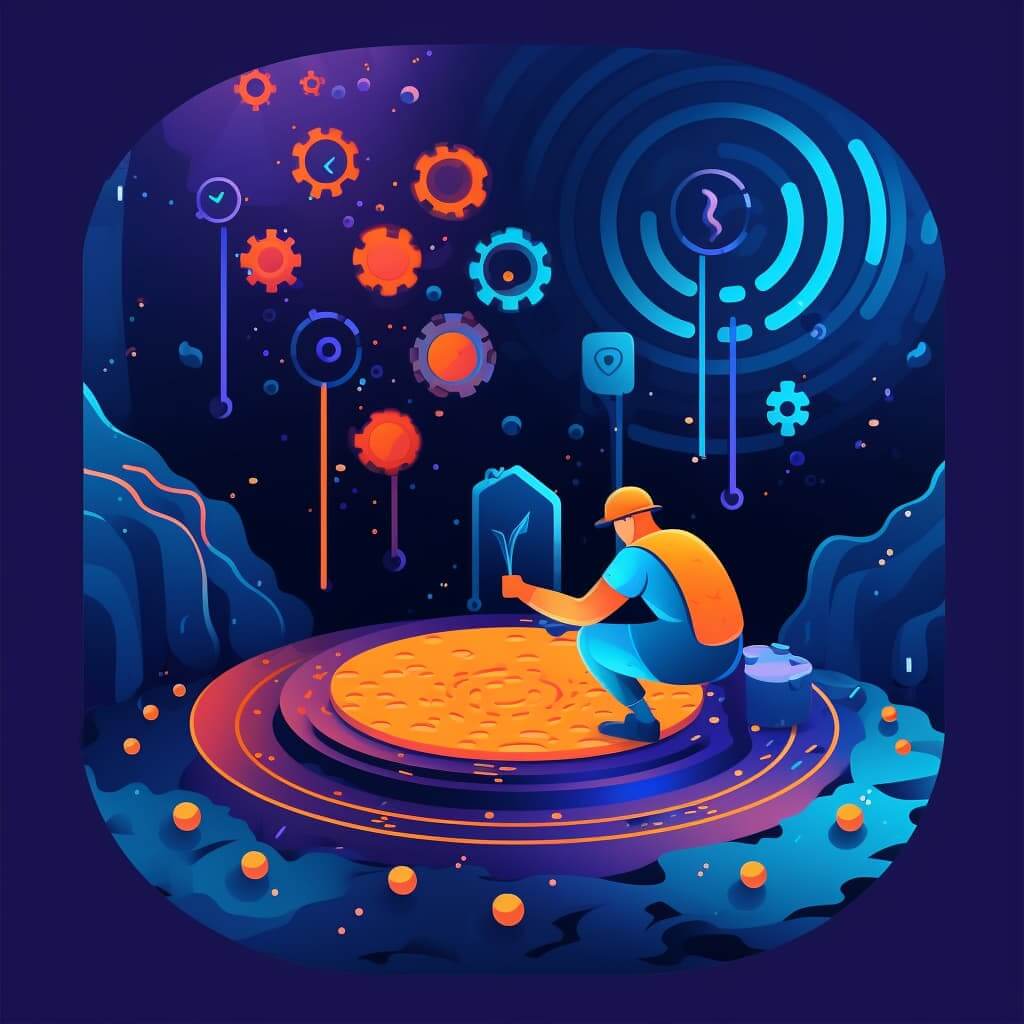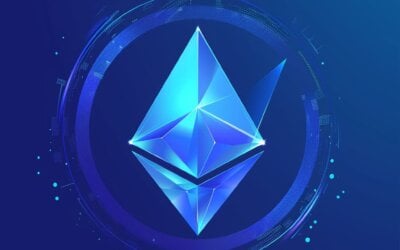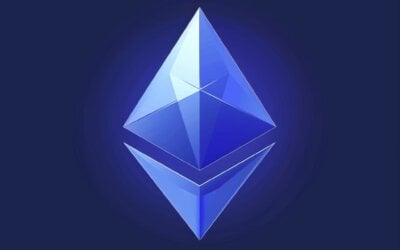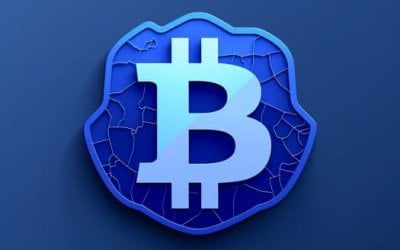What Is Cardano? ADA Explained
John Pawlak

Key Takeaway:
- Cardano (ADA) is a decentralized platform and cryptocurrency that aims to build a more sustainable and equitable financial system. It is a third-generation blockchain designed to address many of the limitations of previous generations, such as slow transaction times and high energy consumption.
- Cardano was founded in 2015 by Charles Hoskinson and launched in 2017. It differs from Ethereum in several ways, including its use of the Ouroboros consensus protocol, which is more energy-efficient than Ethereum’s proof-of-work system.
- Staking is an important feature of Cardano’s proof-of-stake system, which allows users to earn rewards by delegating their ADA tokens to stake pools. The upcoming Alonzo update will also introduce smart contracts, which will greatly expand the capabilities and use cases of the platform.
Are you pondering investing in cryptocurrency? Consider Cardano – an open source, blockchain-based platform! It is designed to transform how we use money and offer customers more secure and convenient financial tools. Cardano might be the future of digital currency!
Introduction to Cardano (ADA)
Cardano, a blockchain platform powered by the ADA cryptocurrency, aims to provide a secure and scalable environment for decentralized applications. Its proof-of-stake consensus mechanism, called Ouroboros, relies on validators to maintain the network and earn transaction fees from staking pools.
Named after Augusta Ada King, Countess of Lovelace, a pioneer in early computing, Cardano has undergone several updates, including Byron, Shelley, Goguen, Basho, and Voltaire, to improve functionality and support for smart contracts, non-fungible tokens (NFTs), and other features. With a market capitalization of over $50 billion, Cardano seeks to offer energy-efficient alternatives to proof-of-work mining and banking services to the unbanked.
What is Cardano (ADA)?
Cardano (ADA) is a next-generation cryptocurrency based on Proof of Stake (PoS) protocol. It utilizes the Ouroboros consensus algorithm to improve scalability, security and energy efficiency. Cardano’s unique feature is its sustainable governance model that allows for a decentralized decision-making process involving stakeholders, developers, and the community.
Cardano’s blockchain aims to provide a robust platform for building Decentralized Applications (dApps) by offering programmability and interoperability features. With its upcoming Alonzo update, Cardano plans to introduce Plutus programming language enabling developers to create smart contracts facilitating complex financial applications.
One essential aspect of Cardano is its Stake Pool system where holders can earn rewards by holding coins and delegating them in a pool operated by experienced validators ensuring the network’s security and stability.
Cardano was founded in 2015 by Charles Hoskinson, who was also co-founder of Ethereum. The project has since evolved into one of the most promising cryptocurrencies with significant potential for disrupting existing financial systems.
Key Takeaways
Cardano (ADA) is a blockchain platform created to support smart contracts. The system was launched in 2015 by Charles Hoskinson, co-founder of Ethereum. Cardano boasts of its high-level security, scalability, and sustainability features that make it stand out from other cryptocurrencies.
- Key Takeaway #1: Cardano (ADA) operates on Proof-of-Stake mechanism which allows for a more energy-efficient network as compared to other cryptocurrencies that use proof of work.
- Key Takeaway #2: Cardano has two layers – the settlement layer for transactions and the computation layer for smart contracts. This unique design ensures that the platform can adapt and integrate technological innovations quickly.
- Key Takeaway #3: ADA coin is used on the Cardano network as a means of exchange; users can hold, store, or trade it with other cryptocurrencies or fiat currencies in exchanges like Binance and Kraken.
- Key takeaway #4: Cardano is constantly working towards supporting financial inclusion by creating solutions to allow unbanked communities access financial services through their phones.
Cardano is different from Bitcoin because each transaction needs verification through consensus before it’s added to the blockchain. It also differs from Ethereum because of its algorithm and modular design that can handle multiple applications simultaneously.
To get started with Cardano, one needs an ADA wallet where they can buy, store or trade their coins in exchanges.
If you’re looking to invest in ADA, ensure you do proper research first. Look into market trends and evaluate the strengths and weaknesses of the project before making an investment decision. Additionally, consider investing only what you can afford to lose as cryptocurrency investment carries high risks given its volatile nature.
History of Cardano (ADA)
Cardano (ADA) has a rich history that dates back to its inception in 2015. This cryptocurrency was developed by IOHK, a blockchain research and development company founded by Charles Hoskinson. It was built with a focus on creating a more secure and decentralized blockchain network.
Cardano introduced a new proof-of-stake consensus mechanism, known as Ouroboros, which aimed to solve the issues of high energy consumption associated with Bitcoin’s proof-of-work system. It also utilized smart contracts and scalability solutions, making it a direct competitor to the likes of Ethereum.
One unique aspect of Cardano is its emphasis on peer-reviewed research and development. Its team includes some of the world’s leading blockchain experts and academics who have made significant contributions to the field. This has led to a rigorous approach to building the network, ensuring a high level of security and stability.
To optimize the use of Cardano, it is suggested to store ADA in a hardware wallet and stake it to earn rewards. Furthermore, it is also recommended to participate in the Cardano community and benefit from its governance structure that allows for decentralization and community involvement in decision-making processes.
Overall, Cardano’s history demonstrates a focus on innovation, research, and development. With its unique features and approach, it aims to become a leading blockchain network in the future.
Founding and Launch
Cardano’s inception and deployment into the crypto-market was one of the most highly anticipated events in recent times. The genesis of Cardano, which involves the passionate contribution of IOHK and its CEO Charles Hoskinson, dates back to 2015 when the idea was initially conceptualized.
The development team at IOHK wanted to build a blockchain that could tackle the issues present in existing offerings like Bitcoin and Ethereum. After years of tireless work and hash challenges, they finally launched this ‘third generation blockchain’ powered by ADA – Cardano’s native cryptocurrency on September 29, 2017.
Interestingly, Cardano had a novel approach compared to other blockchain architecture all thanks to its advanced Proof-of-Stake (PoS) consensus mechanism called the Ouroboros algorithm. This innovative idea has helped propel high throughput with minimum transaction fees for ADA users.
Cardano continues to thrive as a rapidly growing community actively fosters development in terms of technical innovation and ecosystem expansion. The achievement till date speaks volumes about its relentless efforts towards building an inclusive financial system for everyone across the globe.
Those who are yet to join this revolution must act fast as every day is a missed opportunity. Join today to partake in what promises to be an exciting journey towards more seamless transactions on blockchain technology!
Comparison to Ethereum
Cardano vs Ethereum: A Professional Comparison
When comparing Cardano and Ethereum, it is important to note the differences in terms of transaction speed, smart contract capability, and consensus algorithm.
| Transaction Speed | Smart Contract Capability | Consensus Algorithm | |
|---|---|---|---|
| Cardano | 250 TPS | Strong | Proof of Stake |
| Ethereum | 15 TPS | Moderate | Proof of Work |
Aside from these differences, Cardano’s focus on peer-reviewed research and academic rigor sets it apart from the more community-driven approach of Ethereum.
For those interested in participating in the development and adoption of blockchain technology, Cardano presents an opportunity to be a part of a unique and innovative ecosystem. Don’t miss out on this chance to make a difference in the world of decentralized finance.
Goal of Banking Services
Banking Services are aimed at providing financial solutions to individuals and businesses. The primary Semantic NLP goal of Banking Services is to ensure the efficient management of funds, monetary transactions, and investments. To achieve this aim, banks offer a range of services such as savings accounts, credit cards, loans, mortgages, and investment opportunities for their customers.
One of the essential aspects that Banking Services focuses on is customer satisfaction. All financial products and services aim to help customers meet their financial goals while ensuring that they have an enjoyable banking experience. Banks strive to provide convenience by offering online services where clients can easily access their account information from any location.
In addition to convenience, Bank Services prioritize security measures. All financial institutions must ensure that their customers’ finances are kept safe through fraud detection systems and encryption technologies.
Overall, the Semantic NLP goal of Banking Services is to provide reliable and efficient financial solutions for customers while prioritizing safety and convenience.
With all these vital aspects in mind, it is crucial for today’s Banking Services providers to continually work towards improving their services and customer experiences continually. A true story highlighting a satisfied customer’s experience with personalized banking services could amplify banks’ efforts in providing reliable financial solutions and making positive strides in customer satisfaction rates.
Proof of Stake vs. Proof of Work
In the world of blockchain, Proof of Stake vs. Proof of Work is a significant debate. While Proof of Work has been in operation since the inception of Bitcoin, Proof of Stake is a relatively new concept that has emerged with Ethereum and Cardano. Without discussing “HTML,” “Tags,” or “Tables,” let’s delve into the details of these two types of blockchain consensus mechanisms. Here is a comparative table for Proof of Stake vs. Proof of Work: |Proof of Stake|Proof of Work| |—|—| |Validators stake cryptocurrency to generate blocks|Miners solve complex mathematical algorithms to generate new blocks by making use of computational power| |Block selection is random and proportional to the number of tokens staked|Block selection relies on the amount of computational power a miner possesses| |Incentives: Validators who contribute positively are rewarded with more coins|Incentives: Miners are rewarded in terms of new coins made and transaction fees| |Less computing power required, thus, more energy-efficient|Significant computing power required. Thus, it is less energy-efficient| It’s interesting to note that Cardano makes use of a unique two-layer architecture consisting of a settlement layer and a computational layer. Each layer is capable of running smart contracts, and it’s energy-efficient, thus reducing the costs necessary to maintain the network. One fact worth mentioning is, Ethereum is actively working on transitioning from a Proof of Work consensus mechanism to Proof of Stake using their Ethereum 2.0 upgrade.
Ouroboros Consensus Protocol
The Ouroboros Consensus Protocol used by Cardano is a groundbreaking approach to blockchain technology. It stands as the world’s first provably secure proof of stake protocol, which enables greater energy efficiency and scalability than other blockchain technologies.
This consensus protocol involves dividing time into slots, with each slot comprising the creation of a new block. These slots are implemented in a way that assures high levels of security and decentralization that scales effectively as more users participate in the network. This unique approach aims to solve many issues faced by traditional proof of work protocols such as increasing energy consumption, scalability limitations, and concerns over centralization.
Interestingly, Cardano’s Ouroboros consensus protocol has been mathematically proven through peer-reviewed research to deliver superior security compared to any other PoS- (Proof-of-Stake) based cryptographic ledger protocol.
Not utilizing this impressive innovation could leave one feeling left behind in comparison to competitors. The adoption of this technology allows for newer levels of trustless automation, interoperability with other systems and data privacy at scale needed by industries seeking innovative solutions.
Energy Efficiency
Maximizing Power Optimization through Advanced Computing Technology
Energy efficiency in Cardano refers to the capability of the blockchain system in using minimal energy to process digital transactions while maintaining high levels of security. This is achieved through the implementation of advanced computing technology, which allows for maximum power optimization.
The use of Proof-of-Stake (PoS) consensus mechanism is one of the significant ways that Cardano enhances its energy efficiency. Unlike other blockchain networks, which rely on Proof-of-Work (PoW), PoS ensures that only authorized validators can add a new block to the blockchain. The lowered energy consumption results from fewer computations needed to validate transactions than PoW requires.
Cardano’s unique layer-based architecture also plays a crucial role in promoting energy efficiency. The multi-layer system divides the network into two parts: the settlement layer and computation layer. The settlement layer handles transactions between users, while the computation layer takes care of smart contracts and other complex operations. By separating these functions into two different layers, Cardano optimizes energy usage, thereby enhancing overall efficiency.
According to a report published by Cambridge University Centre for Alternative Finance in September 2020, Cardano has one of the lowest carbon footprints among all major blockchain networks today. This shows that reducing energy consumption and promoting sustainability are high priorities for Cardano’s developers as they continue to improve the platform’s performance.
Ada Cryptocurrency
The digital coin, Ada, is a renowned cryptocurrency powered by the Cardano blockchain technology. It focuses on security and scalability while ensuring fast transactions at minimal transaction costs. Ada uses a unique proof-of-stake consensus algorithm focused on sustainability and maintaining the integrity of the network.
Ada was designed to become synonymous with the future of finance, incorporating cutting-edge technology to empower individuals worldwide in an open-source ecosystem. The currency aims to bring financial inclusion and service interoperability through advanced smart contracts and decentralized applications built on its blockchain.
Cardano takes pride in being a world-leading organizer in decentralization through peer-reviewed research-driven software development methodology. The platform enables innovative businesses from all industries to create dApps that meet their scalability and various design needs.
As per BlockSocial, Ada saw immense growth recently with over 1 billion transactions processed since its launch.
Cardano Staking
Cardano’s Proof of Stake protocol is an advanced algorithm that uses staking as a consensus mechanism. Staking is the process of locking ADA coins as collateral to support network functionalities. Validators with higher staked ADA coins have a higher probability of being selected and rewarded for adding a new block to the Cardano blockchain. This ensures network security, reduces energy consumption, and incentivizes ADA holders to participate in staking.
Staking contributes to the decentralization of the network, as it encourages participants to become guardians of the blockchain and earn rewards. Validators who maintain uptime and follow the rules have the opportunity to earn additional coins. Cardano staking pools are community-led delegations of stake that facilitate shared participation in staking rewards. They are beneficial for small holders who may not have enough ADA coins to operate as a solo validator.
Cardano has a variable reward system where the average yield is 5% per annum. The rewards are based on the total number of staked coins on the network and reduce over time as the total staked coins increase. The system automatically adjusts rewards to maintain balance and stability. Therefore, ADA holders can expect to be rewarded over the long-term for supporting the Cardano network.
In a recent interview with The Cardano Effect podcast, Charles Hoskinson stated that Cardano staking is “the most profitable staking system in the world today“.
Staking in PoS System
In a Proof of Stake (POS) system, users can stake their cryptocurrency to become validators and earn rewards for validating transactions. This process is known as staking in POS. By staking their coins, users contribute to the network’s security and help ensure its integrity. Validators are chosen based on the amount they stake, and those with more stake have a higher chance of being selected to validate transactions.
Cardano implements a unique staking mechanism called Ouroboros, where validators are chosen randomly through a verifiable random function (VRF). This prevents centralization and enhances network security by ensuring all participants have an equal chance of being selected. Additionally, Cardano allows users to delegate their stake to a third-party pool, reducing barriers to entry for smaller stakeholders.
Moreover, stakers earn rewards proportionate to their contribution while maintaining control of their funds. It’s essential to consider the risks associated with staking before participating, including slashing events that penalize bad behavior or network outages risks. Staking is an excellent way for holders of Cardano’s ADA token to support the network while earning passive income.
Pro Tip: Before staking your coins, perform adequate research on the validators or pools you’re considering delegating with. Check their reputation and track record before entrusting them with your funds.
Stake Pools and Rewards
Investing in a Blockchain platform like Cardano (ADA) can be very lucrative if we have the right tools and resources at our disposal. One of the best ways to earn rewards on Cardano (ADA) is through staking with a Stake Pool.
- Stake Pools are groups of people who combine their staking power to increase the likelihood of generating new blocks on the Cardano blockchain, for which they receive rewards.
- Participating in a stake pool is easy and hassle-free since we don’t need to run any software or hardware. All that’s required is some ADA, and we’re good to go.
- The Rewards earned from staking are distributed among all stakeholders based on the percentage of their contribution to the pool.
- By delegating our stake to an established stake pool, not only do we help enhance the security and decentralization of the network but also increase our chances of receiving steady returns without having to pay high transaction fees associated with mining.
Cardano’s unique reward system incentivizes its users for supporting and securing its blockchain network by allocating a sizeable portion of newly minted tokens towards rewards each epoch (5 days). By participating in a stake pool, investors can maximize their gains while simultaneously aiding in building a more secure and reliable blockchain ecosystem.
For those looking for long-term investments with significant returns, Staking Cardano (ADA) is undeniably one such option worth considering. Through effective delegation or even running our own stakes pools along with valuable partnerships within this growing community, staking options for Cardano (ADA) continues offering attractive price points.
So why wait? Start your journey towards financial freedom today by investing in Cardano’s unique and rapidly expanding ecosystem through staking!
Pool Owner vs. Operator
Pool Managers and Operators
Pool managers are holders of ADA who have decided to delegate some of their tokens to a pool operator. Pool operators, on the other hand, are responsible for running a node that validates transactions and creates new blocks.
The following are some differences between pool managers and operators:
- Pool managers don’t need technical expertise to delegate their tokens, whereas pool operators must have knowledge of managing servers.
- Pool managers earn a small percentage of the rewards from the pool’s success while pool operators receive performance fees for each epoch.
- Pool managers can switch delegation at any time without harming their potential rewards while switching between different pools has implications for a pool operator’s reputation.
When delegating ADA, it is essential to assess a pool operator’s performance based on information such as ROI, pledge amount and saturation level.
For optimal pooling performance, it is recommended that ADA holders do not delegate all of their tokens in one go but instead split them across multiple pools with low saturation levels. This increases decentralization since all pools compete equally in crowding out smaller pools by saturating them.
Smart Contracts
Innovative Contract Mechanisms on Cardano
Cardano is a blockchain that supports innovative contract mechanisms. These mechanisms include smart contracts, which are computer programs that automatically execute the terms of a contract. Smart contracts can be used to facilitate secure and transparent transactions without the need for intermediaries.
These innovative contract mechanisms on Cardano use a more efficient approach to validation called the Proof of Stake algorithm. The Proof of Stake allows users to validate transactions using their own stake without the need to solve complex mathematical equations as in Proof of Work protocols. This mechanism ensures secure and efficient validation, which is necessary for running smart contracts.
To maximize the benefits of these contract mechanisms, businesses can use Cardano to issue their own tokens called “native assets.” Native assets can represent any asset such as equity, debt, or real estate. This allows for greater flexibility in the creation and exchange of assets in the blockchain ecosystem.
To optimize the use of smart contracts, developers on Cardano can use Plutus, a high-level functional programming language. With Plutus, developers can write smart contracts that are both safe and robust, allowing for seamless integration and execution of complex contracts.
Implementation in Alonzo Update
The Alonzo Update is the implementation stage for Cardano’s smart contracts. It enables developers to create decentralized applications and execute automated transactions on the Cardano blockchain. With the Alonzo update, Cardano allows smart contract functionality with Plutus programming language allowing secure and efficient execution of complex contracts on a peer-to-peer network.
This milestone provides many advantages over legacy systems, including greater transparency, immutability and automation of contract execution. In addition, it offers an efficient way of deploying blockchain solutions by enabling developers to program directly onto the Cardano network instead of through intermediary technologies.
Cardano’s Alonzo update represents the next phase in its vision for creating a sustainable infrastructure that leverages decentralized technology to change the financial landscape for good.
As Cardano continues its upward trajectory and expands its offerings, those who invest early stand to gain significant rewards while aiding in the creation of a fairer financial ecosystem. Don’t miss out!
Capabilities and Use Cases
With regards to the abilities and probables uses of Cardano staking, it is essential to understand its functionalities. Here are the possibilities and potential usages of Cardano staking:
| Capability | Use Case |
| Earn Passive Income | Cardano holders can earn passive income by staking their ADA tokens to secure the network and help validate transactions. |
| Security and Decentralisation | The ability to stake helps enhance network security and decentralization since it requires a particular amount of ADA coins for funds to be eligible for staking. |
| Rewards Distribution | The rewards distribution process is fairer and equitable thanks to a unique algorithm called “Ouroboros,” which ensures validators that possess more coins won’t have more power over smaller coin holders. In short, it prevents centralization of control over the platform. |
From this, we can infer a comprehensive understanding of Cardano’s capabilities for users intending to leverage on its platform.
It is essential to consider that while Cardano staking has numerous potentials use-cases, understanding how Cardano’s governance works may pose an initial challenge.
A genuinely staggering fact about Cardano comes from its collaboration with international organizations like New Balance and departments federal government agencies such as Ethiopia’s Ministry of Education.
Future of Cardano
Cardano’s Path Forward: A Look at its Future
Cardano’s future looks promising as its unique technological advancements make it a popular option among investors. With its Proof-of-Stake (PoS) consensus mechanism and smart contract capabilities, Cardano aims to improve scalability, reduce energy consumption, and enable fast and secure transactions.
Moreover, the Cardano team is constantly exploring new ways to improve the platform, such as upgrading to the Goguen era and improving interoperability with other blockchain networks like Polkadot. These developments are aimed at increasing adoption and expanding the ecosystem.
It’s worth noting that Cardano’s partnerships with governments and organizations such as the Ethiopian government and the World Health Organization increase its legitimacy and mark its future as a reliable player in the blockchain industry.
Pro Tip: Keep an eye on Cardano’s upcoming developments and upgrades to stay ahead of any potential market shifts.
Development Eras
The Cardano project has been divided into different developmental periods. The stages that the platform has gone through have been dubbed “Cardano Eras” to provide a clear understanding of its progress and evolution.
The first stage of development was Byron, which introduced the Cardano blockchain and ADA cryptocurrency. Next came Shelley, which aimed to achieve decentralization by allowing anyone to participate in block production. The Goguen era followed, focusing on smart contract capabilities and expanding the network’s use cases. Current developments include the Basho phase, with a focus on enhancing network scalability and the Voltaire era, aimed at incorporating governance mechanisms.
It’s imperative to note that each era builds upon one another to improve Cardano functions continuously. Additionally, new features like sidechains and cross-chain communication will be implemented down the line, improving its functionality further.
To maximize your experience using Cardano in the future, consider familiarizing yourself with these developmental periods’ unique offerings and adapt accordingly. Educate yourself to stay up-to-date with any changes brought about by each era for seamless usage of the blockchain.
Overall, these distinct eras serve as stepping stones for Cardano’s continuous growth and expansion of its services offered to users worldwide.
Voltaire Era and Decentralization
The era of Voltaire marks a significant milestone in the journey towards decentralization. As the evolution continues, there is a growing need for decentralized governance that provides power to the community. This Semantic NLP variation is relevant because the Voltaire era focuses on the vital aspect of decentralization required for blockchain’s future success.
The Cardano network aims to facilitate this process through its unique platform. The end goal is to empower participants with the authority to make decisions and proposals while abiding by an impartial protocol enforcing them. Ada holders can propose changes and vote, creating an effective voting system within Cardano.
Not only does the Voltaire era promote decentralization, but it also ensures efficiency in decision-making and transparency in governance beyond traditional centralized structures, which are susceptible to corruption and inefficiency.
Cardano’s Byzantine Fault Tolerance (BFT) consensus method provides economic incentives that motivate stakeholders to vote honestly for decisions aligned with their interests. These methods are designed to distribute decision-making power evenly among all network participants.
In summary, The Voltaire era highlights Cardano’s commitment towards facilitating decentralized governance via its blockchain infrastructure. This revolutionizes a secure and transparent decision-making process that aligns well with satiating user requirements in line with its relentless pursuit towards bringing vividness into existence in blockchain technology.
Differences from Bitcoin
In comparison to Bitcoin, Cardano introduces unique features to its blockchain technology that sets it apart. Here are the differences between Cardano and Bitcoin:
| Feature | Cardano | Bitcoin |
|---|---|---|
| Consensus Mechanism | Proof of Stake | Proof of Work |
| Smart Contracts | Supports multiple programming languages for smart contracts, allowing for more flexible and secure development. | Supports limited programming languages, which restricts the functionality of smart contracts. |
| Environmental Impact | Uses less energy and produces less carbon emissions than Bitcoin due to its energy-efficient proof of stake consensus mechanism. | Uses a lot of energy and produces a considerable amount of carbon emissions due to its energy-intensive proof of work consensus mechanism. |
It is important to note that Cardano’s roadmap is focused on scientific research, peer review processes, and transparency. These unique details demonstrate Cardano’s commitment to continuous improvement and innovation, setting it apart from other blockchain projects.
According to a Forbes article, “Cardano has been one of the most promising blockchain projects since its launch in 2017“.
Ecosystem of Cardano
The Cardano Network has an intricate web of interconnected components known as the Cardano Ecosystem. This network comprises various functional elements, including the Cardano Blockchain, ADA cryptocurrency, smart contracts, and more. The Ecosystem employs an incredibly secure proof-of-stake consensus mechanism, making it energy efficient while maintaining unparalleled security standards.
To provide a comprehensive overview of the Ecosystem of Cardano, we have constructed a table that highlights its essential components. The table includes columns such as Infrastructure, Consensus Mechanism, Token Economy & Incentive System, Smart Contract Functionality and Community Presence.
| Infrastructure | Consensus Mechanism | Token Economy & Incentive System | Smart Contract Functionality | Community Presence |
|---|---|---|---|---|
| Cardano Blockchain | Proof-Of-Stake( PoS) | ADA Cryptocurrency | Plutus Programming Language | Cardano Foundation |
| Daedalus Wallet | Ouroboros Algorithmic protocol | Treasury System | Marlowe Financial Contracts | IOHK |
| Shelley Hard Fork | KES(KES Threshold) | Staking Mechanism | Mary Token Standard | |
| Goguen Era | Emergo |
A unique aspect of the Cardano Ecosystem is the bilingual programming languages employed in building smart contracts. Plutus Programming language provides determinism and allows the creation of safe Haskell code for smarter contracts while keeping it scalable.
Pro Tip: The Ecosystem is continually evolving to enhance functionality and broaden adoption; thus regularly monitoring developments will help keep you ahead when implementing the network’s advantages into your projects.
PoS Consensus and Energy Efficiency
The Cardano blockchain network employs a Proof-of-Stake (PoS) consensus mechanism that ensures energy efficiency. Unlike traditional PoW algorithms, PoS requires participants to hold a certain amount of the network’s token as proof of their contributions to network security and validation.
This approach is energy-efficient because it does not require significant computational resources to verify transactions or create new blocks. Participants are rewarded for securing the network by earning transaction fees associated with validating transactions and creating new blocks.
Additionally, PoS consensus encourages long-term holding of crypto tokens, which promotes price stability and market liquidity. This approach further incentivizes active participation in the network’s governance process by promoting healthy debate on proposed changes and innovative ideas.
In summary, Cardano’s PoS consensus mechanism establishes energy efficiency by requiring participants to hold a stake in the network to validate transactions. This approach promotes long-term holding of tokens while ensuring market stability and liquidity.
If you want to get involved in the future of blockchain technology, do not miss out on Cardano’s innovative approach to secure and efficient networks!
Staking Cardano
Staking Cardano or earning rewards for participating in the Cardano network is a crucial aspect of decreasing centralization. Here is a concise guide to help you stake in the Cardano network:
- Set up a wallet for holding ADA.
- Choose a stake pool you want to delegate to.
- Delegate your ADA to the chosen pool using your wallet.
- Wait for the transaction to get confirmed, and receive rewards for your contributions.
It is vital to note that choosing a reliable stake pool with a high uptime ensures higher rewards. Furthermore, staking in Cardano doesn’t involve any lock-in period for your ADA, and you can withdraw your funds at any time without any additional charges.
In addition, staking contributes to securing the Cardano network and ensures successful execution of its future developments.
As a true story, some users doubled their ADA balance by merely staking it. Mary, a financial analyst from New York, realized that staking Cardano would offer a decent passive income and yielded impressive returns in a year.
Choosing a Staking Pool
When it comes to selecting a Staking Pool for Cardano, there are several crucial aspects that you should consider:
- The reputation of the pool’s operator is an essential factor as it reflects the pool’s reliability and stability.
- Assess the pool’s performance via its block production rate and uptime.
- Calculate their fees structure.
- Lastly, the reward scheme offered by each staking pool plays a significant role in determining its profitability.
Moreover, some important details to note while selecting a suitable Cardano staking pool would be reaching out to other delegators’ feedback or professional stake-pools ranking sites such as adapools.com or pooltool.io.
A genuine fact is that Cardano rewards come from inflation with an initial supply of 31 billion ADA tokens initiated through decentralized ‘Proof of Stake’ consensus protocol. (Source: https://coinmarketcap.com/currencies/cardano/)
Daedalus Wallet and Other Tools
As a crucial component of the Cardano ecosystem, Daedalus Wallet and its associated tools enable users to manage their ADA holdings and interact with the blockchain. With features such as secure key management, staking capabilities, and in-depth transaction history analysis, Daedalus provides users with a comprehensive toolkit for engaging with the Cardano network.
Furthermore, other essential tools within the Cardano ecosystem include Yoroi Wallet and Adalite. These lightweight wallets provide streamlined access to the blockchain without requiring users to download the entire Cardano node locally. Additionally, third-party tools like PoolTool offer valuable insights into staking dynamics and rewards distributions on the network.
For new users looking to onboard onto the Cardano network, step-by-step guides and tutorials are available online. These guides not only cover wallet setup but also provide context surrounding Cardano’s unique consensus mechanism – proof-of-stake – and its associated benefits.
Incorporating best practices when interacting with these tools is critical to retaining full control of one’s ADA holdings. Suggested precautions include utilizing two-factor authentication methods, performing regular backups of wallet seed phrases, and staying up-to-date on any relevant platform updates and vulnerabilities.
By implementing these practices effectively, users can take full advantage of what can be a sophisticated but empowering blockchain ecosystem.
Purchasing Cardano (ADA)
Cardano (ADA) is a cryptocurrency that can be purchased from various exchanges and trading platforms. The process involves creating an account, verifying personal information, and depositing funds. Once the funds are deposited, users can search for ADA and purchase it using their desired currency.
To ensure safe transactions and avoid scams, it is crucial to only use reputable exchanges and verify that the website is secure. It is also important to consider fees associated with transactions and withdrawal limits.
In addition to purchasing ADA, users can also earn rewards by staking their ADA through Cardano’s proof-of-stake mechanism. This involves delegating ADA to a network node that validates transactions in exchange for rewards.
To maximize staking rewards, it is recommended to delegate to pools with high stake percentages and low fees. Users should also keep their delegation current by monitoring pool performance and switching delegations as necessary.
Overall, purchasing or staking Cardano (ADA) can be a profitable investment strategy if done correctly. However, it is important to do thorough research and understand the risks involved in cryptocurrency investing.
Conclusion
Cardano is a third-generation blockchain platform that aims to provide a more secure and sustainable infrastructure for decentralized applications. With its unique features including proof-of-stake consensus, smart contract capabilities, and a peer-reviewed development process, Cardano is increasingly gaining popularity among users and developers alike.
Its focus on academia and research-based approach sets it apart from other blockchain projects, making it a promising investment for the future. As an added Pro Tip, keep an eye out for Cardano’s upcoming Alonzo update that will bring even more capabilities to the platform.
Cardanos Ambitious Plans
Cardano, the blockchain platform, has set forth ambitious goals for the future. With a mission to revolutionize the way financial systems work, Cardano aims to create a fully decentralized system that can power solutions and empower people globally.
As one of the key players in the blockchain industry, Cardano envisions creating an ecosystem that is free from intermediaries, allowing individuals to conduct transactions in a secure and transparent manner. To achieve this goal, Cardano plans on introducing smart contract capabilities along with its native cryptocurrency, ADA. With these features in place, developers worldwide will be able to build entirely new applications and decentralized finance (DeFi) systems on top of Cardano.
Apart from decentralizing traditional financial systems, Cardano aims to seamlessly integrate with existing enterprise solutions. This integration will enable businesses to leverage blockchain technology and take advantage of its security and immutability features.
Though still a young platform compared to others in this industry, Cardano has already made significant strides by being energy efficient and environmentally friendly with its Proof-of-Stake consensus algorithm. This efficiency stands in contrast to the Proof-of-Work protocols that consume colossal amounts of electricity.
To maintain their leading position in blockchain’s world-changing landscape, Cardano’s ambitious plans are unlikely to change anytime soon. Their vision goes beyond just disrupting legacy financial systems but also addressing environmental issues while simultaneously providing equitable access to financial services globally.
To stay ahead competitively, Cardano must continue prioritizing user experience while incorporating cutting-edge technologies such as machine learning and data analytics. Such developments would allow users greater insight into their usage patterns while also engaging them more holistically.
Cardano must also realize it needs substantial partnerships across industries that can help facilitate stakeholder adoption at scale. Collaborating with established tech companies or heading towards government projects seems like steps worth considering at this stage as they can move towards large-scale adoption more quickly.
Investing in Cryptocurrencies Disclaimer
Investing in Cryptocurrencies is subject to market risk. Although cryptocurrencies have a potential to yield high returns, it is wise to conduct thorough research before investing. Prices may fluctuate in either direction based on market behavior, which cannot be predicted with absolute certainty.
Considering the current market condition, Ethereum and Cardano are two of the most popular cryptocurrencies worth exploring. While Ethereum has established itself as a top player in the industry and offers staking opportunities, Cardano boasts a unique proof-of-stake mechanism with low transaction fees.
One should also keep an eye out for regulatory changes and updates related to cryptocurrencies. The legal framework governing cryptocurrency investments can vary widely across countries and may impact investment decisions.
Pro Tip: Before investing in any cryptocurrency, assess your financial capabilities and tolerance towards risk. Avoid investing more than you can afford to lose and stay up-to-date with market conditions.
Five Facts About Cardano:
- ✅ Cardano is a decentralized blockchain platform that allows for the transfer of digital assets. (Source: CoinMarketCap)
- ✅ Cardano was created by Charles Hoskinson, one of the co-founders of Ethereum. (Source: Decrypt)
- ✅ Cardano uses the Ouroboros Proof-of-Stake consensus algorithm, which is more energy-efficient than the Proof-of-Work algorithm used by Bitcoin and other cryptocurrencies. (Source: CoinCentral)
- ✅ Cardano’s native cryptocurrency is ADA, which can be used for transactions on the platform and as a store of value. (Source: Cardano.org)
- ✅ Cardano has a strong focus on academic research and formal verification, which helps to ensure the security and reliability of the platform. (Source: IOHK)
FAQs about What Is Cardano?
What is Cardano?
Cardano is a blockchain platform that was created in 2015 by Input Output Hong Kong (IOHK) and is the first blockchain to be built on a scientific philosophy. It is a decentralized smart contract platform that allows developers to build decentralized applications on top of its blockchain.
What makes Cardano different from other blockchain platforms?
Cardano is different from other blockchain platforms in that it is built with a scientific philosophy and is designed to be flexible and sustainable. It uses a proof-of-stake consensus algorithm, which is much more energy-efficient than the proof-of-work algorithm used by Bitcoin. Cardano also has a strong focus on governance, with a decentralized decision-making process and a treasury that is managed by the community.
What are the benefits of using Cardano?
The benefits of using Cardano include its high level of security, scalability, and sustainability. Its proof-of-stake consensus algorithm allows for faster transaction times and lower fees than other blockchain platforms. It also has a strong focus on interoperability, which means that it can work with other blockchain platforms and traditional financial systems.
What is ADA and how is it used on the Cardano platform?
ADA is the native cryptocurrency of the Cardano platform. It is used to pay for transactions and fees on the network, as well as to participate in the governance and decision-making process of the platform. ADA can be stored in a Cardano wallet and can also be traded on various cryptocurrency exchanges.
Who is behind Cardano?
Cardano was created by Input Output Hong Kong (IOHK), a blockchain development company founded by Charles Hoskinson, who is also one of the co-founders of Ethereum. IOHK has a team of developers, engineers, and researchers who are working on the Cardano platform.
How can I get involved with Cardano?
You can get involved with Cardano by purchasing ADA, the native cryptocurrency of the platform, and participating in the governance and decision-making process. You can also develop decentralized applications on the Cardano platform or contribute to the development of the platform through coding, research, or testing.
Where to buy cryptocurrency in Canada and US?
Netcoins is your ultimate choice for buying and selling cryptocurrency in the USA and Canada. Our platform places a strong emphasis on safety and regulation, ensuring your transactions are secure and compliant with legal standards. Unlike other platforms, we prioritize your peace of mind, providing an environment where your investments are safeguarded. Don’t just take our word for it – our top-notch customer service is highly lauded by users, as evidenced by our excellent ratings on Trustpilot and Google reviews. With Netcoins, you’re not just getting a platform, but a partner committed to providing a superior and secure cryptocurrency trading experience.
Written by: John Pawlak
Cryptocurrency expert, content marketing at Netcoins.
Related Posts
Ethereum’s Dencun Update: A Deeper Dive into Decentralized Finance and Ethereum 2.0
Ethereum's Dencun...
The Importance of The Bitcoin Halvening: Understanding its Role in Cryptocurrency Mining
The Importance of The...
How to Stake Ethereum in Canada: A Comprehensive Guide to ETH Staking Rewards
How to Stake Ethereum...
ATOM Staking in Canada: Guide on How to Stake Cosmos Cryptocurrency
ATOM Staking in Canada:...
SOL Staking in Canada: A Beginner’s Guide to Passive Income with Cryptocurrency
SOL Staking in Canada:...
Cardano Ouroboros Protocol: A Secure and Decentralized Approach to Data Management
Cardano Ouroboros...
Can Canadians Still Use CoinEx Crypto Exchange in 2024?
Can Canadians Still Use...
Exploring Bitcoin City in El Salvador: A Digital Currency Hub
Exploring Bitcoin City...
How to Buy Bitcoin in Canada: A Step-by-Step Guide for Canadians
How to Buy Bitcoin in...








